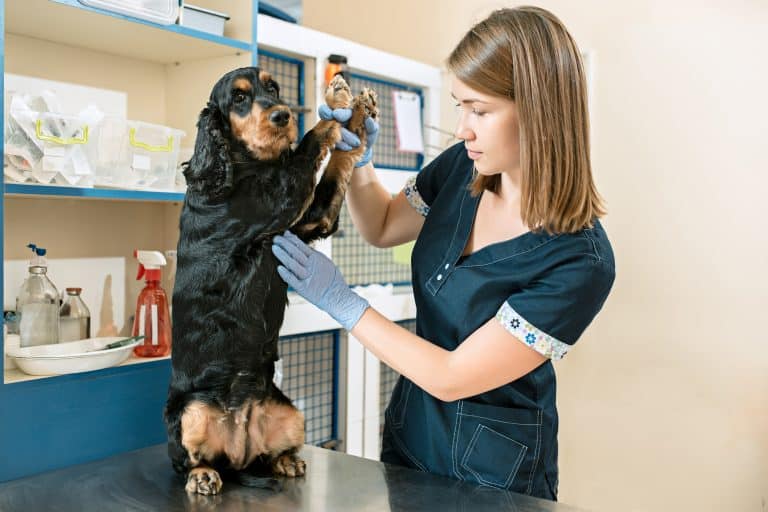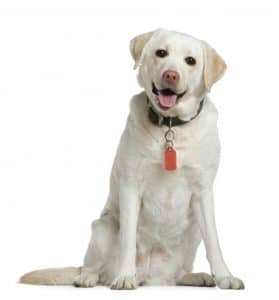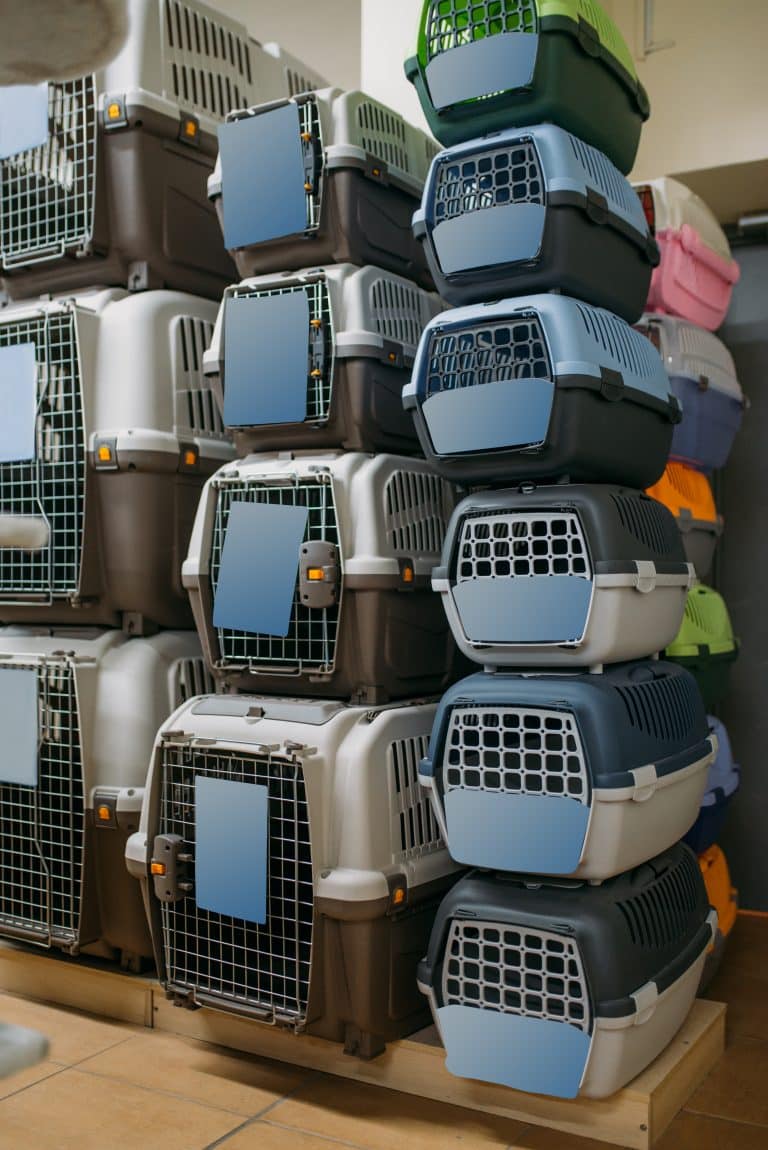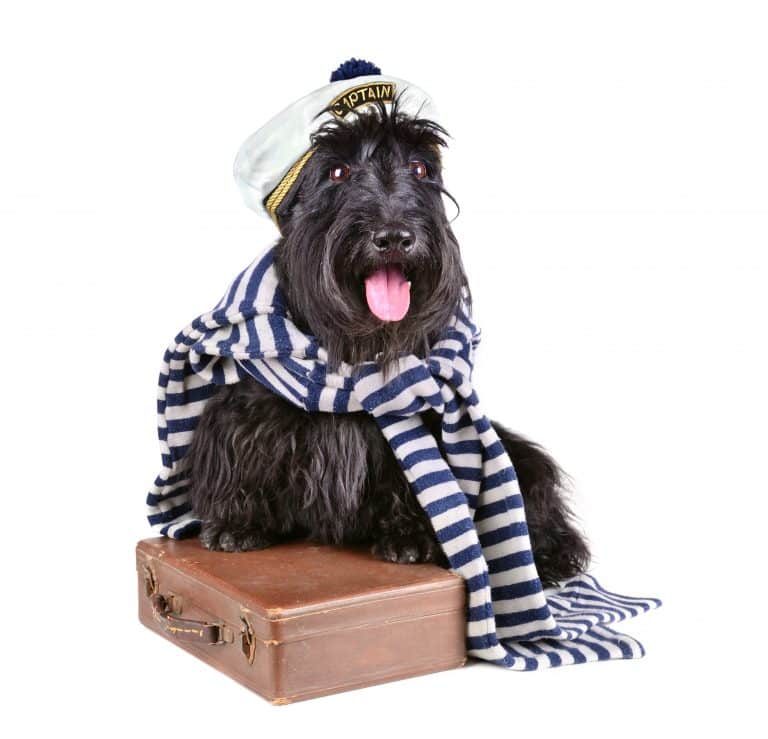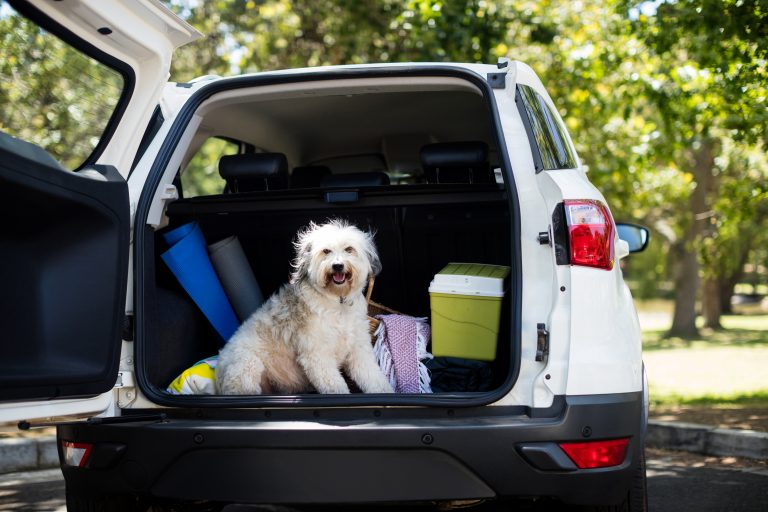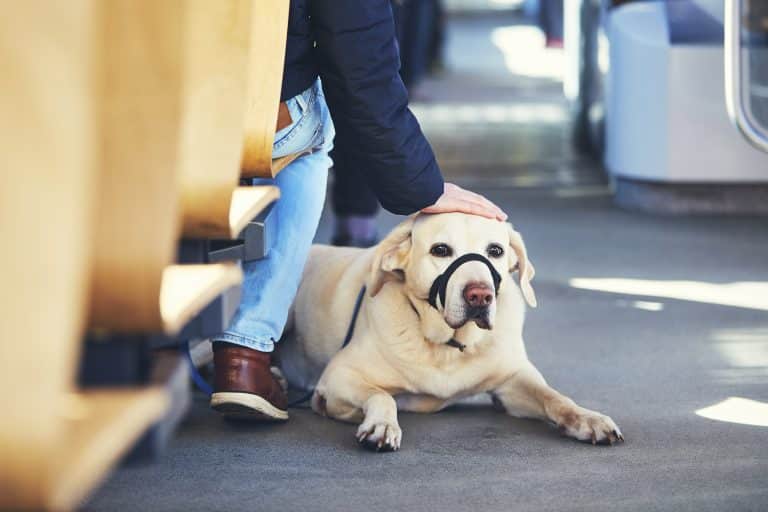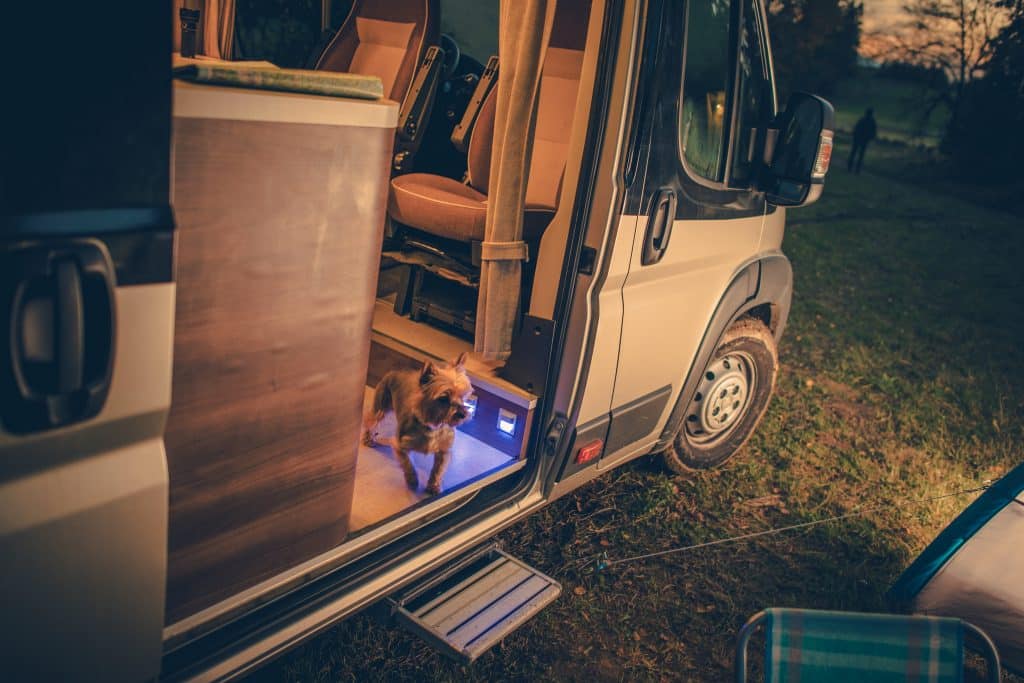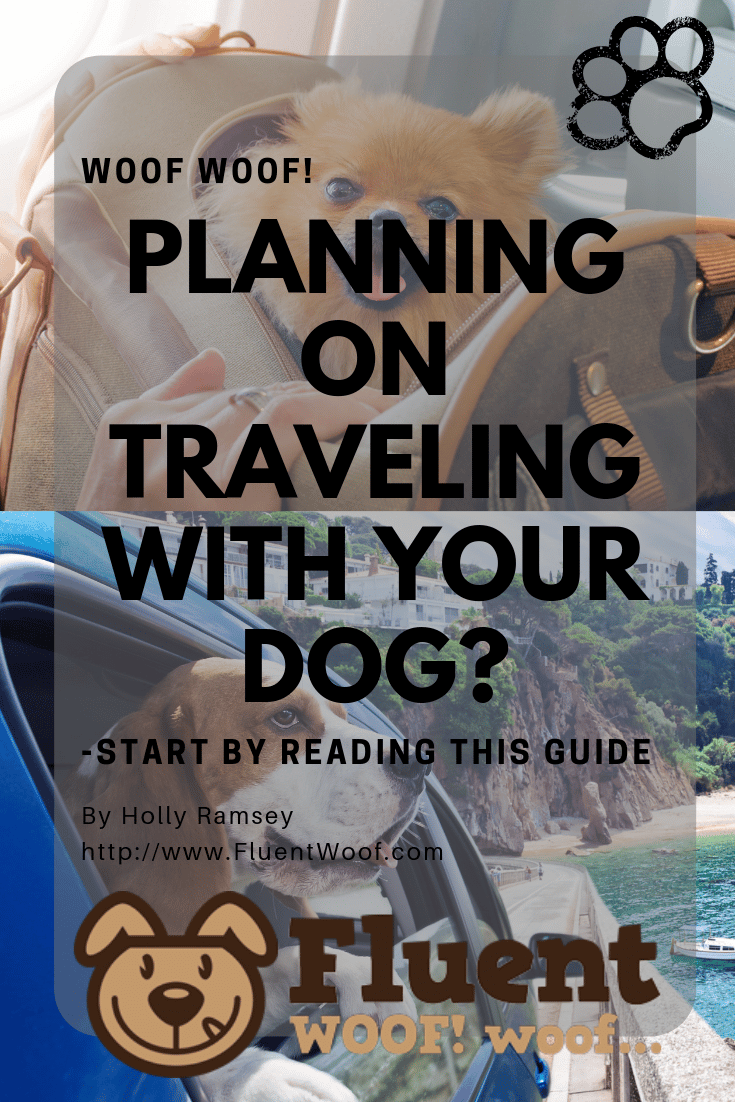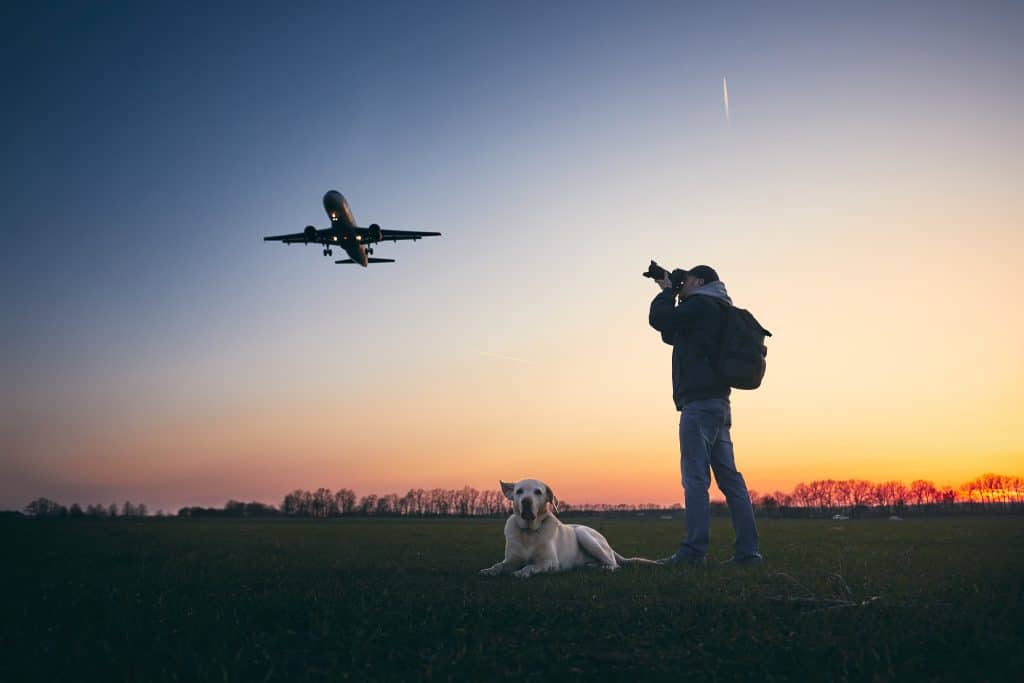Many people do not like the idea of leaving their dog home when they travel on vacation or even to go visit family. But it can be very stressful when traveling with your dog and you may wonder what you need to know to make the trip as smooth and stress-free as possible. As a seasoned dog owner, even I have to make a checklist when traveling with my dogs to make sure I have everything I will need during the trip.
Bringing your dog with you when you travel may sound like the perfect getaway, but there are a lot of things you will need to keep in mind when you deciding to bring your four-legged friend along.
Before heading out on your next great adventure with your dog, you will want to make sure they understand basic obedience commands and have some doggy manners. When staying with friends or relatives, they will expect your dog to be housetrained and have basic manners such as not jumping on people or the counters. There are many places such as PetSmart, PetCo, and even private trainers who will help you with basic obedience training.
One of the scariest parts of traveling with your dog is worrying what to do if they become sick or injured.
Therefore, a major part of preparing to travel with your dog should focus on health and safety.
Schedule a visit with your veterinarian for a health check. Make sure your dog’s vaccinations are up-to-date and you have a fresh supply of flea/tick medication and heartworm preventatives. Ask your vet to print out a copy of your dog’s vaccinations and other medications they are currently taking.
Some modes of transportation will require you to get an official state health certificate verifying your dog is healthy. To be on the safe side, you should probably go ahead and get this certificate and keep it with your other important documents for travel.
Make sure your dog’s first aid kit is updated before you head out on your travels. Have a copy of your dog’s vaccinations and medications in the kit for easy reference. Take time to research your destination city and have the emergency contact information ready for a veterinarian near where you will be staying.
Fit your dog properly to a collar or harness that they cannot easily slip out of if something spooks them. You may be excited to be traveling with your dog, but they may not be so thrilled in the beginning. Keep them safe by having them fitted for a collar or harness.
Make copies of your dog’s papers that verify you are the owner of record such as their registration or adoption papers.
Take updated photos of your dog; one of each side and a front view of their face and print them.
Keep these photos with their paperwork so if they happen to become lost you have current photos to distribute in the area.
If you do not already have an identification tag, have one made and attach to your dog’s collar or harness.
This can be a touchy subject for some dog owners. Many times I hear people say that their dog does not like a crate and therefore they are not made to stay in a crate. Here is the deal with a crate when traveling.
Unless your dog is a certified service dog with the appropriate paperwork and they are assisting you on your journey, every dog needs to be contained in a crate. This is for your dog’s own safety.
Airlines require dogs that travel to be crated. If the dog is traveling in the cargo hold of the plane, they must travel in an airline approved hard-sided crate. If your dog is small enough to fit in one of the small travel crates, they can fly in the cabin with you, under your seat. It is usually better if the travel crate for in-cabin flying is soft-sided.
When traveling by car, you will want to have your dog ride in a hard-sided crate that is appropriately sized. Simply put, do not pick a crate that is big enough for a German Shepherd if your traveling companion is a Chihuahua. You want your dog to be comfortable and have enough room to stand up and turn around. Anything bigger than that can be a problem if there is an accident, a small dog is an overly large crate can still go projectile and be injured in the event of an accident.
A dog that is in an appropriately sized crate will not be thrown around inside the crate giving less chance of additional injuries.
Use straps or bungee cords to tie down your dog’s travel crate. A seat belt that is positioned correctly can also be used in a pinch to secure the crate. Pay close attention to small crates and make sure they are secure enough that they will not be thrown through the air if an accident happens.
Let’s be honest here, it can be expensive to travel with your dog. Depending on how you plan to travel, you need to be aware of any extra hidden costs that may pop up unexpectedly. From extra airfare to pet fees at hotels, the costs can quickly compound into a major expense.
Most major airlines have set fees for dogs flying in the cargo hold that can range from $350 to over $1,000 depending on the size of your dog and their travel crate.
Dogs that are flying in-cabin with their owners will usually require their own ticket to board the plan which will cost between $100 and $150. Check with the airline you are traveling with for the costs associated with flying your dog.
Buses and trains will also have their own set fees for doggy passengers. When traveling with my dogs, I always verify the extra costs to bring them along with me.
Traveling by car may seem like the least expensive option since you were planning on the gas expense anyway. However, if you are planning on stopping at a motel for the night before continuing your journey, you will need to do a bit of research. Many motels and hotels have gone to a no pet policy or a crate policy. They will also charge a pet fee along with the original room fee. Most crate policies state that the dog will remain crated inside the room for the duration of your stay other than when they are being walked outside.
The main thing to remember is to do your research regarding extra fees for bringing your dog along with you. When I travel with my dogs, I make sure I have an “emergency fund” set aside as a “just in case” some extra expense comes up while I am away.
I have already touched on air travel a bit earlier, the main thing to remember with air travel is that dogs must travel in a crate and they will also require a health certificate issued by a licensed veterinarian in your state. It can be expensive to travel by air with your dog, especially if you have a larger dog. Only small dogs can travel in-cabin with you and those will usually require their own ticket to board the plane.
Before booking your flight with Virgin Atlantic, contact their cargo department to make sure there is room for your dog on the flight you wish to fly.
With all of the bad publicity over dogs that have died while in flight, many people are unsure of whether they should fly with their dog or not. There are regulations in place that help protect your dog. Any dog that has a flat face such as the Oriental breeds are no longer allowed to fly.
There are several airlines that do allow pets in cabin but there are strict size regulations and an additional cost. Before booking your ticket, speak with the airline you plan to travel with and verify what is required for your dog to fly with you.
There are a few airlines that do offer a rewards program for flying with your dog. Ask the airline you are planning on booking with about a rewards program for your dog such as United Airline’s PetSafe program where dogs traveling in the cargo hold will earn points towards domestic and international flights. Your dog can also help you earn points when they travel with JetBlue’s JetPaws and Virgin Atlantic Flying Paws program. When you book passage for you and your dog, talk with the ticket agent about their points program and how many points are being earned for the trip.
When traveling with your dog by car, whether it is a short drive or a cross-country trip, your dog should be travel in a crate. There are numerous stories of people involved in car accidents and their beloved dog is either injured or killed or they ran away from the accident. You do not want this to happen to your dog. An accident is scary for anyone, but it is doubly so for your dog because they do not understand what has happened.
Measure your dog and fit them to the correct size crate. A crate that is too large for them can be dangerous in an accident. They can easily go projectile inside a crate and get injured. Secure the crate with a tie down, bungee cord, or seat belt.
Make frequent stops so your dog can get out and stretch their legs, go potty, and get a drink of water. Keep your dog on a leash when you stop and be aware of your surroundings. You will be stopping in unfamiliar areas and you want to keep your dog close.
Never leave your dog unattended in your vehicle.
The temperatures inside your vehicle will vary drastically from the outside temperature. If traveling during the summer months, make sure your car has air conditioning so you and your dog can be comfortable. Never leave your car running and unattended, especially if they are not crated.
A friend of mine who breeds and shows collies was traveling with her dog when she stopped for gas. She pumped her gas and then ran into the quick shop for a soda.
Unfortunately, she did not have her dog in a travel crate and he became frantic when she left him. He put his foot on the automatic window switch and managed to lower the winder. He jumped out of the car and ran away. She never did find her baby and was absolutely heartbroken.
Traveling by bus with your dog is probably much less common than by plane or car. This is because there are very strict guidelines set in place by most bus services.
Greyhound for example only allows certified service animals to travel on their buses. All other animals are prohibited. Emotional support dogs are not allowed since they are not a service dog. Their owner does not suffer from a disability that is recognized by the Americans with Disabilities Act (ADA).
Check with the bus line you would like to travel and verify if your dog will be allowed to travel with you. Many city or metro buses will allow small dogs to travel short distances.
Check with your city’s public transportation system to learn about the rules and regulations of traveling with your dog on the bus.
When you board the bus with your dog, be sure to verify with the bus driver that your dog is allowed.
Make sure your dog is clean and does not smell or look scraggly.
Move the back of the bus to look for a seat where it will be calmer and not as many people standing up or moving.
Before taking a set on the bus, be sure to ask the people around you if they are allergic to dogs or if they mind having your dog near them. If they do have an allergy or appear upset that they will have to be near your dog, look for a different seat.
When traveling on a bus, it is best to keep your dog in its pet carrier to avoid any issues and to keep some water in their carrier to keep them hydrated.
Small pets are allowed to ride by train; however, you are expected to closely adhere to the set guidelines. Only approved dog carriers are allowed so be sure to check with the train station when you book your passage to make sure your carrier is acceptable.
Extra fees usually apply when bringing your dog with you on the train. Your dog’s carrier will count as one piece of carry-on luggage. Most train stations will have you sign a document verifying your dog’s eligibility and releasing them from all liability regarding the safety of your dog.
Most cruise lines have banned traveling with your pet with the exception of certified service dogs. Each cruise line has its own rules and regulations regarding service animals and emotional support animals are not considered service animals and are not allowed. Contact the cruise line prior to booking passage for updates to their pet policy.
Cunard’s Queen Mary 2 allows dogs and cats only on certain transatlantic trips. However, your dog is not able to be in your cabin. They are relegated to an onboard kennel where specific crew members will care for your dog during the trip. This can be very pricey, close to what your own fare will be.
The Acadian Nature Cruise out of Bar Harbor, ME is a two-hour nature cruise. Your dog is allowed to accompany you as long as they are on leash and well-behaved. You can enjoy the fresh air with your beloved pooch and snap some Instagram worthy selfies with your dog while on the nature cruise.
Downeast Windjammer Cruises out of Cherryfield, ME has short nature cruises where you can tour the Maine coast, Frenchman’s Bay, and Acadia for about two hours. Your dog’s fare is free but they must remain leashed while on the boat.
It can be super fun to spend a weekend communing with nature and hiking through unknown trails. Great fun can be had when you bring your dog along for the trip. When you decide to camp with your dog, remember to pack their own supplies and keep the first aid kit current.
Bring plenty of your dog’s kibble and fresh water. Most people think it is okay for their dog to drink out of creeks and streams, but this can be dangerous as certain bacteria and protozoa contaminate creeks and streams. It is a good idea when you return from camping with your dog to have a full fecal exam done by your vet. A de-wormer may be needed if they have picked up a parasite.
Follow the rules of the park or campgrounds where you are staying regarding your dog. Many KOAs offer dog-friendly areas and dog parks for your friend to play and get their exercise while you are staying there.
A proactive approach is always a good idea. When you are planning to travel with your dog, be sure to do your homework and know where your dog is welcomed with open arms. Keep your dog’s identification updated and always have current photos of your dog on hand.
Also, make sure your dog’s first aid kit is up-to-date and their vaccination records are also packed for the trip. If you are not sure about something regarding your dog and where you are traveling to, be sure to ask! Pet policies are constantly changing so what might have been acceptable last year may be obsolete this year.
Always make a checklist when you are planning a trip. When I travel with my dogs, I have list upon list of things to do, things to pack, and things to update. There are even websites that offer exhaustive lists for traveling with your dog.
Be respectful to the hotel staff and your fellow guests. Pick up after your dog and do not allow them to be yappy or overly loud in the hotel room.
Some hotels will enforce a crate policy where your dog can only be in your room as long as they remain in a crate.
The way your dog behaves at a hotel could be the deciding factor on whether they remain dog-friendly or not.
BringFido has 24/7 support and a lowest pet fee guarantee that has dog lovers buzzing. This site is a great resource for dog owners who love to travel with their canine best-friends.
It can be so stressful when you decide to travel with your pet. However, it can also be a fun experience that builds a stronger bond between you. Be sure plan ahead and verify your dog is allowed, whether it is on a plane, a train, a bus, a cruise, or even your own car.
Have a contingency plan in place and make sure you know basic first aid to help your dog in case of an emergency. Research emergency veterinary services near the area you are traveling and make sure you have all of your dog’s documentation with you.
I wish you a wonderful trip that is filled with lots of sweet memories with your fur-baby. Enjoy your trip and come back safe!


